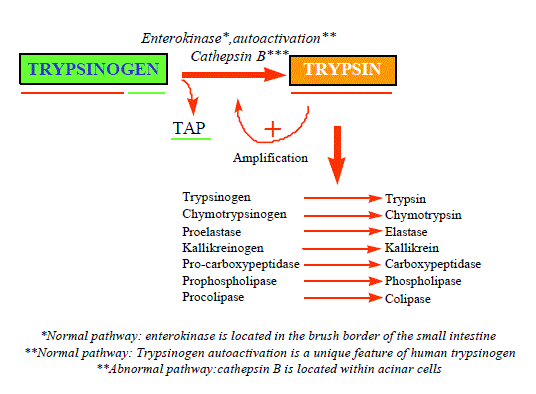
 |
| Figure 1. Trypsinogen could be either activated into active trypsin either by the brush-border enzyme enterokinase in the small intestine or by cathepsin B, a lysosomal enzyme present in acinar cells. Another mechanism of trypsinogen activation, which is a unique feature of human trypsinogen, consists of trypsinogen autoactivation. This finding may be more relevant to human pancreatitis whereas cathepsin B mediated trypsinogen activation is more relevant to rodent models of pancreatitis. Once trypsin is activated, it can catalyze the activation of other digestive pro-enzymes as well as trypsinogen itself, initiating the auto-digestion of the gland. Recent reports claim that the colocalization of trypsinogen and cathepsin B in the same compartment could result in premature activation of trypsinogen and leads to acute pancreatitis. |